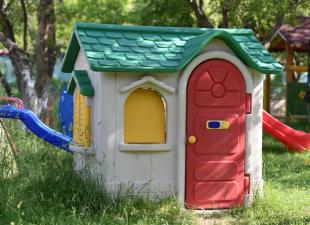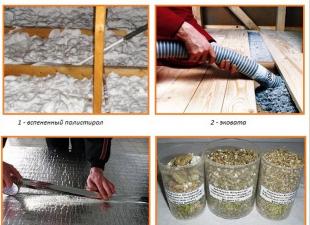The efficiency of the fireplace is directly related to the cleanliness of the chimney. There are situations when the lack of dry logs forces the owners of private houses to heat with damp firewood. Due to the incomplete combustion of the wood, soot residues are distributed along the walls of the chimney. Over time, the blockage becomes impenetrable for hot air. To avoid this kind of problem, a contract is concluded with a chimney service company. However, to save money chimneys with your own hands.
To reduce the number of cleaning procedures during the operation of the stove, it is enough to use the heating device correctly. It is not recommended to burn household waste and blissful logs. It is necessary to constantly clean the blower from ash, periodically clean the intermediate blockages of the pipes with soot through special revisions of the chimney. Only high-quality products are used as other types of fuel. Subject to these basic rules of use, the chimney will be cleaned no more than once a year. Remember, if the stove smokes, it's time to clean the chimney.
Why clean the chimney
The combustion products used in the heating appliance give off residual soot, which over time turns into accumulated soot. Hot air currents push these substances out through the chimney, however, in parallel, some of them settle on the walls of the smoke outlet. During the operation of the furnace, the amount of soot multiplies and an insurmountable barrier layer is created. This neglect leads to the following consequences:
- The chimney outlet pipe is reduced in bore diameter, as a result of which the amount of draft is reduced.
- Soot is the result of a chemical combustion reaction. Consequently, the accumulation on the walls does not have the best effect on the wear of the chimney.
- The heat capacity of the pipe decreases, and with it the efficiency of the heater.
- As a consequence of the blockage -.
- The risk of fire inside the flue gas duct increases.
Good traction
This is the primary task for any heater. High thrust rates guarantee quick heating of the furnace. The accumulation of soot on the walls of the chimney reduces the diameter of the chimney, which significantly reduces the draft. Another negative effect is that a blockage in the chimney causes partial penetration of smoke through the stove back into the room.
Operational safety
The heater operates at high temperature conditions, which is reflected in the chimney with the same effect. Therefore, if there is an unacceptable accumulation of soot, there is a risk of fire in the chimney.
If the chimney is clogged, the combined effect of low draft and high temperature can lead to carbon monoxide poisoning.

To protect the chimney from such problems, it is necessary to regularly clean the chimney from soot. The time interval between these procedures is at least twice a year.
Do-it-yourself methods for cleaning the chimney from soot in a bath, in a stove: folk and other remedies
You can do it yourself in three ways:
So, we will try to clean the chimney with folk remedies:
- The most common method is rock salt. In fact, this is more likely not a chimney cleaning, but an option to combat the accumulation of soot on its walls. In the furnace, where the combustion of fuel products occurs, add 100-200 gr. rock salt. This popular method is preventive in nature, therefore, it is unable to completely clean the chimney from soot.
- Potato peels are a mythological pipe cleaner. To effectively use this method, you need to prepare a bucket of potato peel. When operating a fireplace or stove, cleaning parts are poured onto the fire. At the combustion stage, potato starch is mixed with hot air vapors, which, when passing through the chimney, softens the soot that has settled on the walls of the chimney. However, after using this method, it is still necessary to manually clean the chimney.
- The third pipe cleaner is dried aspen wood. To clean the chimney with your own hands, you need two or three armfuls of aspen logs. This type of fuel will heat the pipe to very high temperatures.
Due to the fact that aspen wood has a very high heat transfer, this method is not recommended for use if a thick layer of soot has formed in the pipe and the chimney is made of fragile materials. When heated, the pipe may not withstand such loads.

Chemical liquid compounds: the best options for cleaning a clogged chimney
When the stove smokes with black soot, then it's time to use more effective methods to clean up soot accumulations. These include industrial-type cleaning products. Such chemical chimney cleaners are made in the form of powders, briquettes and liquids. Depending on the type of agent, a certain amount of the mixture is added to the furnace of the heater. Combustion releases chemicals that decompose the accumulation of soot on the walls of the chimney. The disintegrated deposits are crumbling. You can clean the chimney with special tools.
The chemical compounds used to clean the chimney do not harm human health when burning.
- A popular flue gas cleaning agent is a composition against the formation of carbon deposits on the pipe walls. The chemical composition is presented in the form of a special powder, poured into heating products. Such a chimney cleaner is used in a strict proportion: up to 250 grams per 1 ton of fuel.
- The Czech soot cleaning agent Kominichek effectively copes with the task. When burning with wood, this chemical composition triggers a catalytic reaction that burns soot deposits on the walls of the chimney. A distinctive feature is that creosote deposits burn at low temperatures.
- A well-known tool for cleaning the chimney is the "Chimney sweep" log. In appearance, such a tool resembles a bar. It is recommended to use the composition as a preventive measure to clean the chimney duct. With regular use, the degree of formation of creosote deposits is reduced to zero. An undoubted advantage is the fact that there is no risk of soot ignition when using this type of chemical composition. Chimney cleaning logs are burned in the stove no more than twice during the entire heating season.

To properly use a log chimney sweep with your own hands, it is imperative to study the instructions for use.
Mechanical cleaning: how to heat the stove after pine wood
In case of unavailability of chemicals and ineffectiveness of folk remedies, the most effective way is carried out - cleaning the chimneys with your own hands. For high-quality performance of the work, you will need to equip a brush for cleaning the chimney with your own hands. Correct cleaning of chimneys and stoves from soot is carried out in the following order:
- We block each cleaning hole and all revisions. We close the firebox door. Open fireplaces should be covered with a damp blanket.
- It is recommended to clean the chimney in good weather, as the procedure is performed on the roof of the building. Using safety belts, we rise to the roof.
- We conduct a thorough inspection of the chimney for debris and foreign objects. If there is a soot deposit with a layer not exceeding 3 mm, the mechanical cleaning procedure may be postponed. Otherwise, push the entire available layer down the pipe.
- The visible area of the soot is cleaned with a scraper, after which a brush is needed to clean the chimney. For greater efficiency, a metal brush with a brush at the end is made.
- We clean the remains with a scoop from the firebox itself.
Correctly cleaning the chimney from soot is easy.
When faced with insurmountable blockages in the pipe, you can use a core (metal ball) with a diameter corresponding to the chimney, which is tied to a rope. As you can see, there are plenty of options and methods for self-cleaning the chimney channel. Therefore, such a task is easily solvable for everyone. The main thing to consider when choosing a cleaning agent is the amount of creosote accumulations in the chimney. Before using this or that remedy, you should charmingly read the instructions of the manufacturer of the chemical composition.
When you really need to clean up
According to studies that are properly maintained and operated, they are less likely to need a chimney cleaning process. The duration of use in this mode reaches several years. According to the rules, the burning of household waste, bags and plastic products in ovens does not have the most favorable effect on the cleanliness of the inner walls of the chimney. Therefore, so that there is no need to clean the pipe from soot, the heater should be properly operated. It is easy to identify the symptoms of the onset of flue duct fouling. First of all, the color of the emitted smoke changes. In a soot-free chimney, its color is white or transparent.
When soot deposits accumulate, the color gradually changes to dark shades. If these symptoms do not occur, experts recommend performing preventive cleaning at least twice a year. After each chimney cleaning action, a quality control is carried out. To control the performance of cleaning work in the smoke exhaust pipe, special mirrors are used, which are lowered from top to bottom along the chimney channel. This method allows you to find the most vulnerable points of the smoke exhaust pipe and take appropriate measures. For example, create a new revision in order to often clean the chimney of its individual parts. Everyone can clean the chimney.
 parlini.ru Repair of an apartment, a summer residence and a house.
parlini.ru Repair of an apartment, a summer residence and a house.


